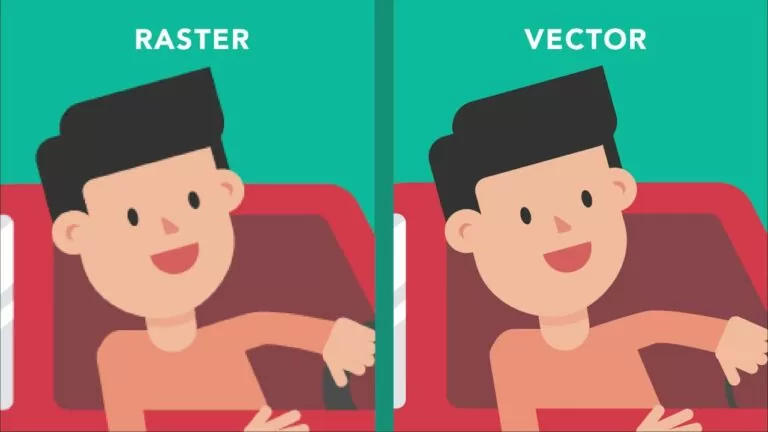
Let's start by making a distinction on the types of digital images and then let's see the characteristics of the vector format. Basically these can be of two types: raster or vector.
They take their name from the English word “raster” which means grid. In fact, in raster graphics, or bitmaps, the image is made up of a square-shaped grid of points called pixels.
Each of those pixels has certain color information that together create a certain image. The color profile most often used in bitmap images is RGB because it is the profile that computer graphics cards use to generate the image itself on the screen.
The most important property of a raster image is resolution, which is given by the number of pixels contained in a certain unit of measurement. The English inch (2,54 cm) and the Dot Per Inch (DPI) ratio are used as standard. The higher the number given by this ratio, the higher the resolution of the image and therefore the quality of the same.
A resolution of 300 dpi is considered the quality standard for good printing while 72 dpi is sufficient for the screen to obtain good visual quality.
Obviously decreasing the size of the photo will increase its resolution, as well as enlarging it will have a lower resolution obtaining the so-called grainy effect, the one in which the individual squares become visible, as in the image at the head of the paragraph.
Vector graphics are very different from raster graphics, and so are images. In fact, it is based on geometric shapes such as lines, points, curves and polygons to generate an image and certain characteristics of color or effects are attributed to these shapes.
Since vector images are made up of geometric shapes, it is possible to enlarge them practically infinitely without losing any resolution since the same geometric shapes have mathematical equations at the basis.
The difference in disk space occupied is another fundamental difference: in fact, vector images take up much less space than raster ones because the information contained in the image is much lower, making modifications easier too.
A negative aspect, however, is that extremely powerful machines and software are needed to obtain vector images rich in quality and detail, as for example it is necessary to do in the field of 3D graphics. Or at least in the current state of technology.
The vector format, compared to the raster one, has the following advantages:
This is a graphic infinitely scalable: as mentioned it is resolution independent; this means mathematically generated shapes are recalculated each time you zoom in or out.
The colors of the vector files are editable quickly and easily; just select a shape or a line to go and change the color that has been assigned to it, it is also possible to switch from one color profile to another, for example from RGB to a Pantone.
You can work on this kind of images by visualizing only the side dishes; you can easily turn fills on and off for all elements that make up the image to show only the edges. This is a very important type of visualization because it allows you to identify hidden elements and makes it possible to design guides for the equipment that performs cuts and engravings.
Digital images in vector format are characterized by particular extensions and if we have to work with this type of images let's make sure we have saved this type of file.
The most important vector image formats are:
The difference between the two image types means that each format is better suited for a specific purpose. In this case, the vector files due to their characteristics, are a lot suitable for printing.
First of all they are very useful in the technical design, for example in CAD and engineering.
But it is also a valuable format used by graphic designers is preferably used for logo creation and coordinated graphics because these are elements that can be used both on a business card and on a colossal billboard. But this type of format is well suited for any project to be printed on brochures, flyers, billboards or icons for software.
Ercole Palmeri
Predictive maintenance is revolutionizing the oil & gas sector, with an innovative and proactive approach to plant management.…
The UK CMA has issued a warning about Big Tech's behavior in the artificial intelligence market. There…
The "Green Houses" Decree, formulated by the European Union to enhance the energy efficiency of buildings, has concluded its legislative process with…
Casaleggio Associati's annual report on Ecommerce in Italy presented. Report entitled “AI-Commerce: the frontiers of Ecommerce with Artificial Intelligence”.…